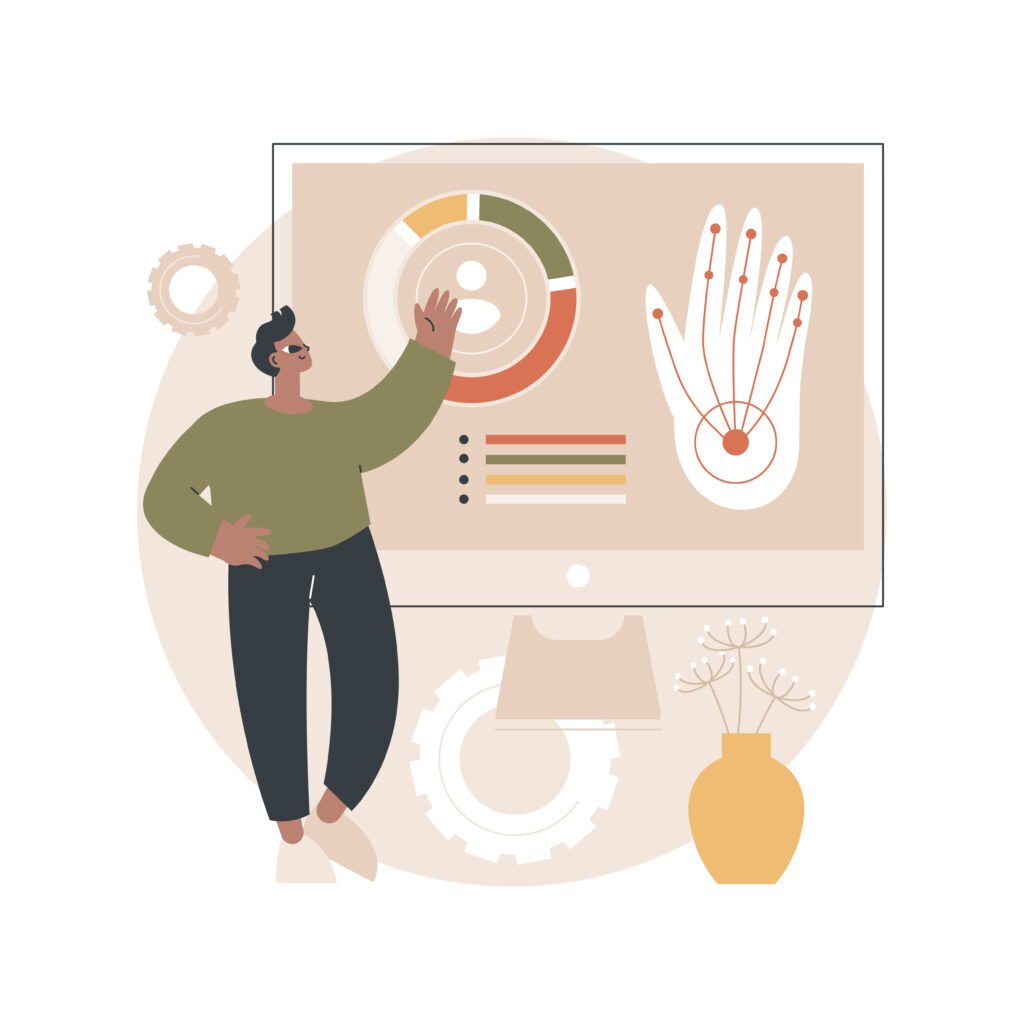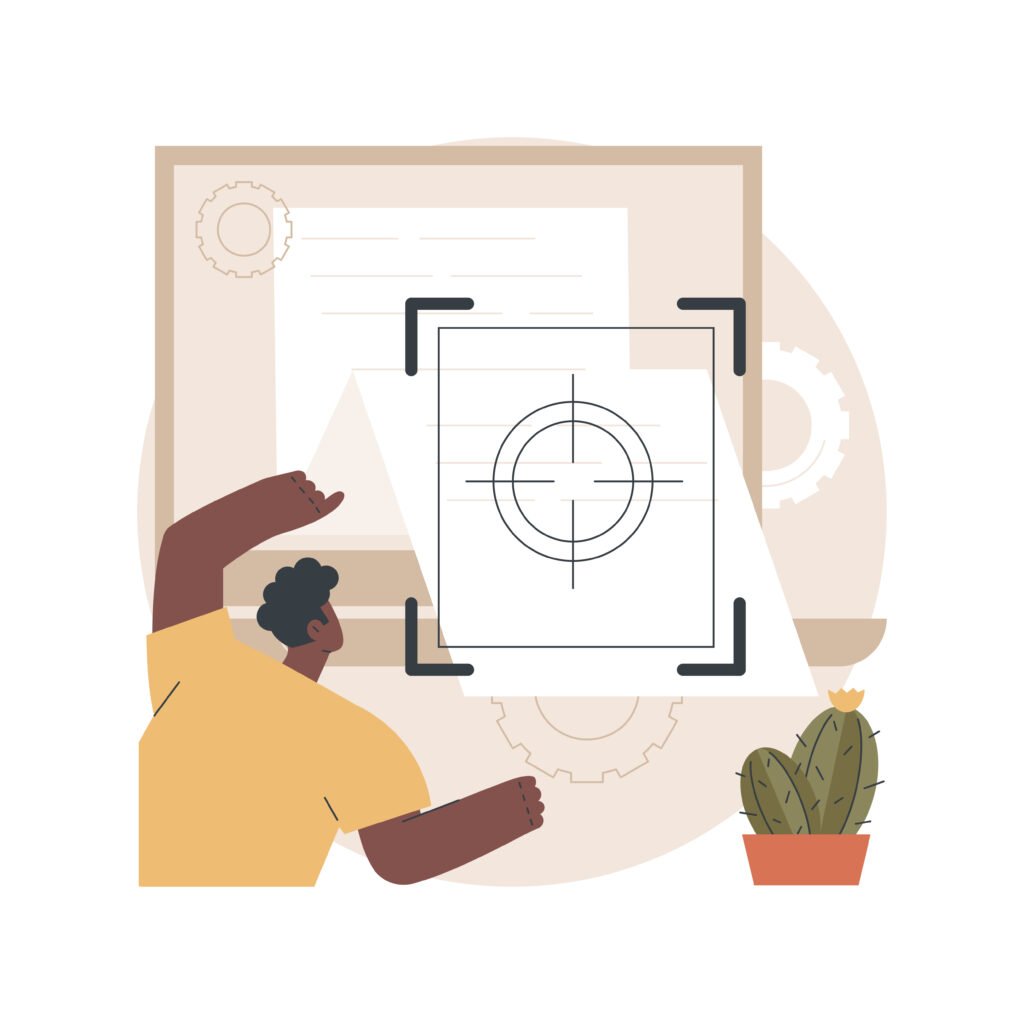How Are Image Processing Techniques Utilized in Computer Vision?
23 May 2024
Ilya Lashch

Summary
In this article, we will explain the purpose of image processing, distinguish it from computer vision, and elucidate how these technologies drive business automation and digitalization. The article covers various aspects, including image preparation stages, image processing architecture, and recognition methods, along with future trends and use cases across industries. It emphasizes the transformative potential of image processing in enhancing efficiency and decision-making processes in businesses.
What is Computer Vision?
Machine vision can be defined as a collection of hardware and software technologies that provide machines with image-capture capabilities and utilize advanced segmentation methods to automate their decision-making. The market grows impressively fast: by the end of 2024, it is projected to reach US $25.80bn.
What fuels the computer vision techniques market? While human vision is good at analyzing a scene qualitatively, computer vision excels at the quantitative aspect. The ability to capture and quantify a scene using artificial intelligence makes computer vision a suitable alternative to human vision for applications that require:
- Inspection of small details
- Non-physical contact
- More safety
- Higher productivity
- Improved accuracy
- Automate repetitive tasks
- Operating in hazardous environments
Compared to vision systems used in consumer applications like smartphone cameras and point-and-shoot cameras, computer vision systems offer specialized capabilities tailored for diverse industrial and commercial needs. They are component configurable, API programmable, mechanically reliable, and stable in extreme temperatures.
To prepare images for further analysis, computer vision techniques involve image acquisition and pre-processing. Let’s examine them in more detail:
1. Image acquisition is capturing visual data using image sensors, such as cameras or scanners. Here’s how it works:
- Cameras capture light from a scene, which is then converted into electrical signals by image sensors (e.g., CCD or CMOS sensors).
- The camera’s electronics process these electrical signals to generate a digital image consisting of pixels arranged in a grid.
2. Pre-processing involves enhancing the quality of captured images and ensuring image alignment for subsequent analysis. Common pre-processing techniques include:
- Noise reduction: Removing unwanted noise or distortions from the image to improve clarity.
- Normalization: Adjusting the image’s intensity levels to ensure consistent brightness and contrast.
- Image resizing: Adjusting the image’s size or resolution to a standard format for analysis.
- Color correction: Adjust the color balance and saturation to ensure accurate scene representation.
- Image enhancement: Increasing sharpness, reducing blur, or enhancing specific features to improve visual clarity.
Pre-processing aims to improve the effectiveness of algorithms used for object detection, recognition, or further image restoration tasks by providing clean and standardized input images. Now, let’s look at the processes behind image processing techniques.
Image Processing System Architecture
A system that uses image processing models mainly consists of four main blocks:
1. Image capture
The core of computer vision lies in the ability to visually capture a scene and convert it into a digital format. Image sensors combined with lenses can capture light, convert photons into electrons, and output a digital image. Converting a scene into a digital image is often called image capture. Image processing in computer vision and supporting electronics are usually housed in a protective case we call a camera.
2. Data transmission
Once a sensor captures an image and is packaged into a digital format called a «pixel format,» it is transmitted to an external computing device for further processing. Here is a list of some standards developed by the imaging industry for data delivery:
- CoaXpress
- GigeVision
- USB3 vision
- MIPI
- IIDC2
3. Information extraction
After a raw image is received from a sensor by a computing device, it is pre-processed and analyzed for features such as:
- Edge detection
- Pattern comparison
- Classification
- Segmentation
- Measurement
- Object detection and location
- Character recognition
- Barcode reading
4. Decision making
Using the information extracted, an algorithm, usually trained with machine learning, would make decisions and send control outputs to a machine.
Object Detection and Recognition
The image recognition algorithm is fed as many labeled images as possible to train the model to recognize the objects in the images. It generally includes the following three steps.
1. Collecting and sending data
The first step is to collect and label a dataset of images. For example, an image with a car must be labeled «car.» In general, the larger the data set, the better the results.
2. Training the neural networks using the data set
Once the images are labeled, they are sent to the neural networks for training on the images. Developers generally prefer using Convolutional Neural Networks or CNN for image recognition because CNN models can recognize features without additional human input.

3. Tests and predictions
After the model trains the dataset, it is given a «test» dataset containing unseen images to verify the results. The model uses its insights from the test data set to predict objects or patterns in the image and attempts to recognize the object.
During object recognition, the system often faces a few challenges:
- Changing lighting conditions: An object looks different depending on the lighting conditions and the shadows cast. Object recognition makes a big difference whether an object is strongly illuminated or under-illuminated.
- Simultaneous classification and localization: Object detection often struggles to classify several objects simultaneously and locate them in an image. Finding a generalized solution to this is not easy. However, the newest neural networks are trained through supervised learning and are commonly used to classify multiple objects.
- Messy or textured background: The background is another disruptive factor in object recognition. The problem is that objects can blend into the background or disappear. An algorithm trying to find a specific book in the following image will have difficulty locating the desired object.
- Speed: Object recognition algorithms must be incredibly fast, especially when processing videos. Achieving the desired processing speed for images often requires balancing speed and accuracy. Artificial neural networks have proven to be an ideal tool for object recognition. These neural networks are trained in advance for the specific task, which often requires a lot of computing power and time. However, once these networks have been trained, they can analyze images in a fraction of a second.
Depending on the level of detail of image processing in computer vision, there are different approaches to object detection. Some of the common image processing techniques are:
- Template matching: This technique compares an image with predefined templates or object models to select the best match.
For example, it can recognize faces by comparing an image to a facial template database. While simple and fast, template matching has limitations such as sensitivity to noise, occlusion, scaling, rotation, and illumination changes.
- Feature-based detection: This method involves extracting characteristic features or key points from an image and matching them with features from an object database. Features can include edges, corners, blobs, or regions of interest that are invariant to transformations like scaling and rotation.
Image processing examples include systems that can detect landmarks by matching image features with those of a map. Feature-based detection is robust and flexible but requires a large and diverse feature database and a reliable matching algorithm.
- Deep learning-based recognition: This approach employs deep neural networks to learn object features and labels from labeled data. Deep neural networks consist of multiple layers of artificial neurons capable of learning complex object representations.
For example, a system could recognize animals by learning features and labels from a dataset of animal images. Deep learning-based recognition is powerful and accurate but demands significant computing resources and data and may lack interpretability.
Implementing techniques of digital image processing involves complex algorithms, data processing, and integration with existing systems, which can be challenging without expertise. While each method has its advantages and limitations, determining the most suitable object recognition software depends on factors such as the specific use case, available data, and desired level of accuracy. A tech provider can assess these variables and recommend the most effective solution tailored to the business’s needs.
Feature Extraction Algorithms
Image processing techniques in machine learning have given particular importance to pattern recognition. While machine learning uses algorithms to recognize patterns in data, deep learning goes a step further. It uses neural networks to identify even deeper and more complex structures in large amounts of data.
A central aspect of pattern recognition is feature extraction. This involves identifying and analyzing certain properties or «characteristics» in a data set. Key feature recognition algorithms include:
- Edge detection algorithms identify sudden changes or edges in intensity or color within an image. They are commonly used to locate boundaries or edges of objects in images.
- Object detection algorithms locate and classify objects within images or video frames. Image classification helps identify and differentiate various objects based on predefined categories.
- Barcode reading algorithms interpret barcode symbols present in images or documents. They extract encoded information from barcodes, such as product codes or serial numbers, for further processing.
To better understand exactly where and how these algorithms are put to work, let’s take a look at a few use cases:
1. Finance and banking
- Fraud detection system: Utilizes edge detection algorithms to identify irregular patterns or edges in financial transactions, enhancing fraud detection capabilities and minimizing false positives.
- Automated check processing: Integrates image processing techniques to extract relevant information from checks, such as account numbers and amounts, streamlining the check processing workflow and reducing manual errors.
- Automated document management: Incorporates barcode reading algorithms to scan and extract data from barcoded documents like invoices or receipts, optimizing document processing efficiency and reducing manual data entry efforts.
2. Manufacturing
- Quality control in production lines: Implements edge detection algorithms to identify defects or abnormalities in manufactured products, ensuring high-quality standards and reducing waste in the production process.
- Assembly line automation: Integrates image processing methods to locate and position components on the assembly line, facilitating robotic picking and placing tasks and improving manufacturing efficiency.
- Inventory management: Utilizes barcode reading algorithms to track inventory levels and manage stock in real-time, improving inventory accuracy and minimizing stockouts or overstock situations.
3. Martech (Marketing Technology)
- Social media monitoring: Employs edge detection algorithms to analyze images or videos on social media platforms, identifying brand logos or products to track brand visibility and sentiment across different channels.
- Retail analytics: Integrates barcode reading algorithms to track sales performance and monitor inventory levels, enabling data-driven decisions in product placement strategies and improving customer satisfaction.
- Marketing analytics: Utilizes object detection algorithms to analyze customer engagement data, identifying patterns or changes in behavior to optimize marketing campaigns and enhance customer targeting strategies.
The breadth of image processing techniques showcased in these use cases highlights the versatility and impact of computer vision across various industries. Businesses can use these advanced algorithms to enhance efficiency, accuracy, and decision-making processes.
At Lightpoint, we specialize in custom computer vision software development services, empowering businesses to harness the full potential of image processing methods tailored to their specific needs and objectives. Whether it’s fraud detection, quality control, or marketing analytics, our expertise ensures innovative solutions that drive tangible business outcomes.
Future Directions

A uniquely developed computer vision algorithm usually improves an existing process or solves a specific problem. The same or a similar algorithm can also be used for other issues in the company. If a system is established in one area that extracts and verifies information from incoming invoices, this system can also be used elsewhere in the company with slight modifications.
For customers who need faster time to market or want to add intelligence to an existing process or application, technological synergy would be the most effective way to stand out from the competition. Here are a few promising areas for improvement:
- Expense management: An image processing system automates data extraction from invoices, which can be extended to HR for expense claims. Connected with AI-powered chatbots, it can help streamline employee interactions.
- Inventory management: Image processing tracks warehouse inventory. It can augment IoT sensors for real-time monitoring and predictive analytics for proactive inventory management.
- Customer service: Image recognition in customer service allows for automated product inquiries, complementing AI-driven chatbots for personalized recommendations and seamless user experiences.
By integrating these future trends into the IT environment, companies can achieve considerable added value through increased efficiency, business automation, and cost savings.
Conclusion
The development in computer vision is moving towards flexibility and generality. While two or three years ago, image recognition only worked for clearly defined categories, deep learning models can now conduct almost any kind of data analysis. Most decision-makers in companies are fully aware that the tendencies in computer vision and image processing will radically change the business world.
Nowadays, automation techniques are used in more and more business areas. For example, with computer vision image processing, you can:
- Utilize advanced techniques to extract meaningful insights from visual data.
- Leverage interoperable APIs and integration tools to collaborate with teams using OpenCV, Python, and C/C++.
- Use workflow apps to automate everyday tasks and explore algorithms faster.
- Accelerate data processing in the cloud and data centers – without any special programming or IT knowledge, and more.
For customers looking to build a custom computer vision solution across their organization, Lightpoint makes it easy to prepare data and build, train, and deploy ML models for any use case with fully managed infrastructure, tools, and workflows. Let’s discuss your custom project!